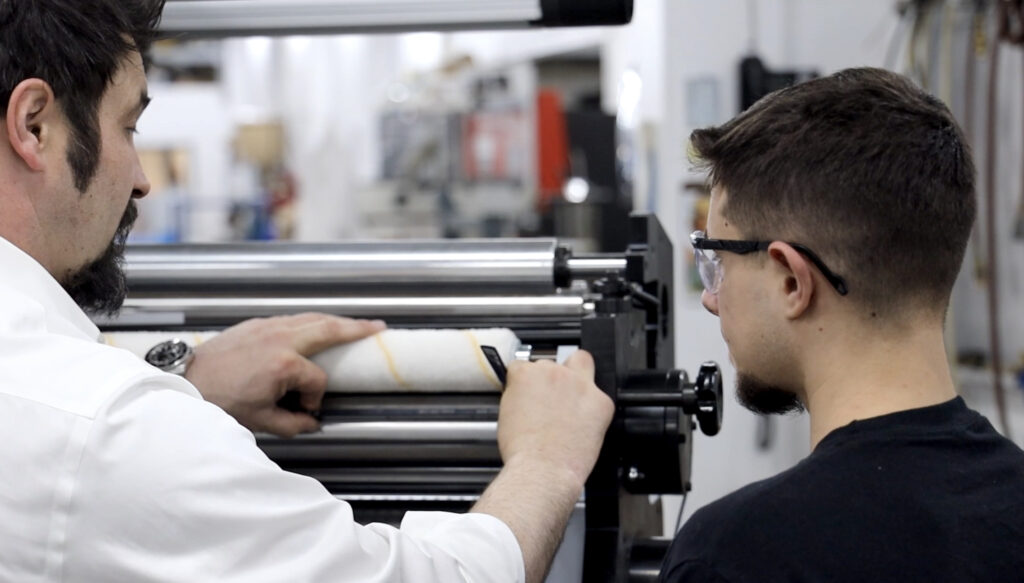In the fast-paced world of retail, staying ahead of the competition requires innovative solutions to streamline operations, enhance customer experiences, and optimize inventory management. One technology that has been gaining traction in the retail sector for its potential to address these challenges is Radio-Frequency Identification (RFID).
RFID technology is experiencing a resurgence in the retail industry due to its many advantages. RFID technology plays a big role in retail and directly impacts operational efficiency while providing many benefits to inventory management. Leading retailers are embracing RFID technology and enhancing the entire customer experience.
RFID in Operational Efficiency and Inventory Management
One of the primary reasons retailers are turning to RFID technology is its ability to significantly improve inventory accuracy. Some of the top retailers in the world have adopted RFID technology such as 7-Eleven, Macy’s, Target, H&M, athletic apparel giant lululemon, and many others.
Lululemon uses RFID tags throughout all their stores, 500 or more, and reports an inventory accuracy of 98%. This is a game-changer in an era where omnichannel shopping is on the rise and retailers need precise tracking of inventory to meet customer demands.
RFID tags are small electronic devices that can be attached to products. These tags contain unique identification information that can be read wirelessly, making it possible to track products throughout the supply chain accurately. This enables retailers to optimize their inventory management and fulfillment processes. By having real-time insights into stock levels, retailers can adjust their production and supply chain operations based on customer trends and preferences.
Additionally, RFID technology allows for more efficient store operations, such as streamlined self-checkout processes, which ultimately improve the overall shopping experience for customers.
RFID Tags Combat Retail Theft
Another crucial application of RFID in retail is its role in combating theft. Retail shrinkage, primarily driven by theft, costs the industry billions of dollars annually. RFID technology provides detailed information on stolen items, helping retailers identify trends and specific items that are more susceptible to theft. This granular data can be invaluable for law enforcement agencies and loss prevention teams in devising strategies to mitigate theft.
RFID Technology Enhances Customer Experience
RFID is also finding innovative applications in enhancing the customer experience in retail stores. For instance, RFID-enabled smart mirrors in fitting rooms can read tags on clothing and suggest related styles and accessories, providing a more personalized shopping experience. This use of RFID in customer-facing applications is still emerging, but it holds significant potential for creating engaging and interactive shopping experiences that resonate with today’s tech-savvy consumers.
Cost-Effectiveness and Broader Adoption of RFID
Over the past decade, the cost of RFID technology has seen a significant reduction, making it more accessible for retailers. The average cost of an RFID tag has fallen by 80%, and RFID readers’ costs have also decreased. This cost reduction, combined with the technology’s improved capabilities, is driving broader adoption in the retail sector.
Leading Retailers Embrace RFID
Several major retailers have embraced RFID technology and are reaping the benefits. Walmart, for instance, has taken a proactive stance by mandating its suppliers to include RFID tags on all merchandise in some departments. This move signals a strong push towards industry-wide adoption, as Walmart recognizes the transformative impact RFID can have on inventory accuracy and operational efficiency.
Nordstrom and Macy’s are also notable examples of retailers that have leveraged RFID technology to their advantage. Macy’s uses RFID to ensure they can sell products down to the last item, highlighting the technology’s benefits in maintaining inventory accuracy and maximizing sales opportunities.
Challenges and Future Outlook
Despite these advancements, challenges persist in the widespread adoption of RFID. The technology’s application is limited to products containing liquid or metal due to interference. Additionally, the initial investment in deploying RFID across the supply chain can be substantial. However, the long-term benefits, including improved inventory management and enhanced customer experience, make RFID a valuable technology in the retail industry.
Tamarack’s RFID Inlay Insertion Equipment
For retailers looking to implement RFID technology seamlessly, Tamarack offers cutting-edge RFID inlay insertion equipment. The Tamarack
MVW Inline RFID Insertion Equipment is designed to streamline the process of embedding RFID inlays into various products, making it an essential tool for retailers looking to harness the power of RFID for inventory management, anti-theft measures, and enhanced customer experiences.
RFID technology has experienced a renaissance in the retail industry, offering retailers a range of benefits, from operational efficiency and improved inventory management to enhanced customer experiences. Leading retailers like Walmart, Nordstrom, and Macy’s have already recognized its potential and are actively integrating RFID technology into their operations. As costs continue to decline and technology evolves, we can expect even more retailers to adopt RFID, revolutionizing the way they do business and enhancing the overall shopping experience for consumers.
Tamarack Products is a leading manufacturer of RFID inlay insertion equipment and inline and offline web finishing equipment. We design, engineer, and manufacture equipment for a variety of industries to produce RFID tags, cards, and labels, as well as integrated forms and labels. Contact us to learn more about our equipment solutions to incorporate RFID technology in your retail operation.





